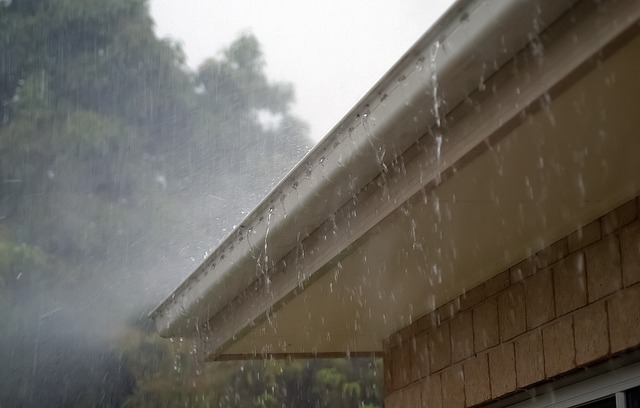Weathertight
One of the fundamental purposes of most buildings is to provide shelter for their occupants. The word weathertight (or weather tight) refers to an enclosure such as a building that is sealed so that elements of the weather such as rain, wind and so are not able to adversely penetrate into the interior.
Weathertight is not the same as watertight. Submerged under water, almost all buildings would fail. Generally buildings are actually modifiers of weather (or climate) rather than totally sealed against it, as they may reject, or partially reject some aspects, while allowing others to penetrate, or partially penetrate into the interior. For example, while a building may need to achieve a certain degree of air-tightness, it must also allow adequate fresh air into the interior to allow people to breath, dilute odours, moderate humidity and reduce the accumulation of bacteria, dust, smoke and other contaminants. Buildings will also typically allow daylight to enter so that the use of artificial lighting can be minimised.
Very broadly, the environmental conditions that the fabric of a building might be required to modify include:
- Air temperature.
- Air movement.
- Humidity.
- Air quality.
- Noise.
- Solar radiation.
- Long wave infra red radiation.
- Visible light.
- Moisture.
Climatic modification is achieved by the external fabric of the building, such as walls, roofs, floors, windows, doors and so on. The extent of modification provided depends on a wide range of factors, including; the materials used, their thickness and form, the way the elements fit together and interact, surface conditions, openings and so on. This can result in very complex constructions, such as cavity walls and rainscreen cladding, and high-performance components such as doors and windows.
Elements such as cavity walls and rainscreen cladding allow air and moisture to partially penetrate into the building fabric, before being drained back to the outside. This can allow the construction of breathable structures that prevent weather from penetrating all the way to the inside, but also allow the release of built up interstitial and internal moisture back to the outside.
If a building is not weathertight it may experience:
- Penetrating damp.
- Flooding.
- Draughts.
- Poor comfort.
- Damage to its fabric and contents.
- Poor performance.
- Mould growth.
Achieving weathertightness is generally an important milestone in the construction of a building as it allows the construction of aspects of the interior that might be damaged by exposure to the weather, such as finishes, electrical equipment and so on.
Increasingly, the building regulations are establishing performance standards for the weathertightness of buildings, with Part F setting standards for air tightness, Part L setting minimum requirements for insulation and so on.
Climate change is likely to place further demands on the weathertightness of buildings as more extreme weather events are likely and the occurrence of extreme weather is likely to become more common.
[edit] Related articles on Designing Buildings Wiki
Featured articles and news
RTPI leader to become new CIOB Chief Executive Officer
Dr Victoria Hills MRTPI, FICE to take over after Caroline Gumble’s departure.
Social and affordable housing, a long term plan for delivery
The “Delivering a Decade of Renewal for Social and Affordable Housing” strategy sets out future path.
A change to adoptive architecture
Effects of global weather warming on architectural detailing, material choice and human interaction.
The proposed publicly owned and backed subsidiary of Homes England, to facilitate new homes.
How big is the problem and what can we do to mitigate the effects?
Overheating guidance and tools for building designers
A number of cool guides to help with the heat.
The UK's Modern Industrial Strategy: A 10 year plan
Previous consultation criticism, current key elements and general support with some persisting reservations.
Building Safety Regulator reforms
New roles, new staff and a new fast track service pave the way for a single construction regulator.
Architectural Technologist CPDs and Communications
CIAT CPD… and how you can do it!
Cooling centres and cool spaces
Managing extreme heat in cities by directing the public to places for heat stress relief and water sources.
Winter gardens: A brief history and warm variations
Extending the season with glass in different forms and terms.
Restoring Great Yarmouth's Winter Gardens
Transforming one of the least sustainable constructions imaginable.
Construction Skills Mission Board launch sector drive
Newly formed government and industry collaboration set strategy for recruiting an additional 100,000 construction workers a year.
New Architects Code comes into effect in September 2025
ARB Architects Code of Conduct and Practice available with ongoing consultation regarding guidance.
Welsh Skills Body (Medr) launches ambitious plan
The new skills body brings together funding and regulation of tertiary education and research for the devolved nation.
Paul Gandy FCIOB announced as next CIOB President
Former Tilbury Douglas CEO takes helm.
UK Infrastructure: A 10 Year Strategy. In brief with reactions
With the National Infrastructure and Service Transformation Authority (NISTA).























